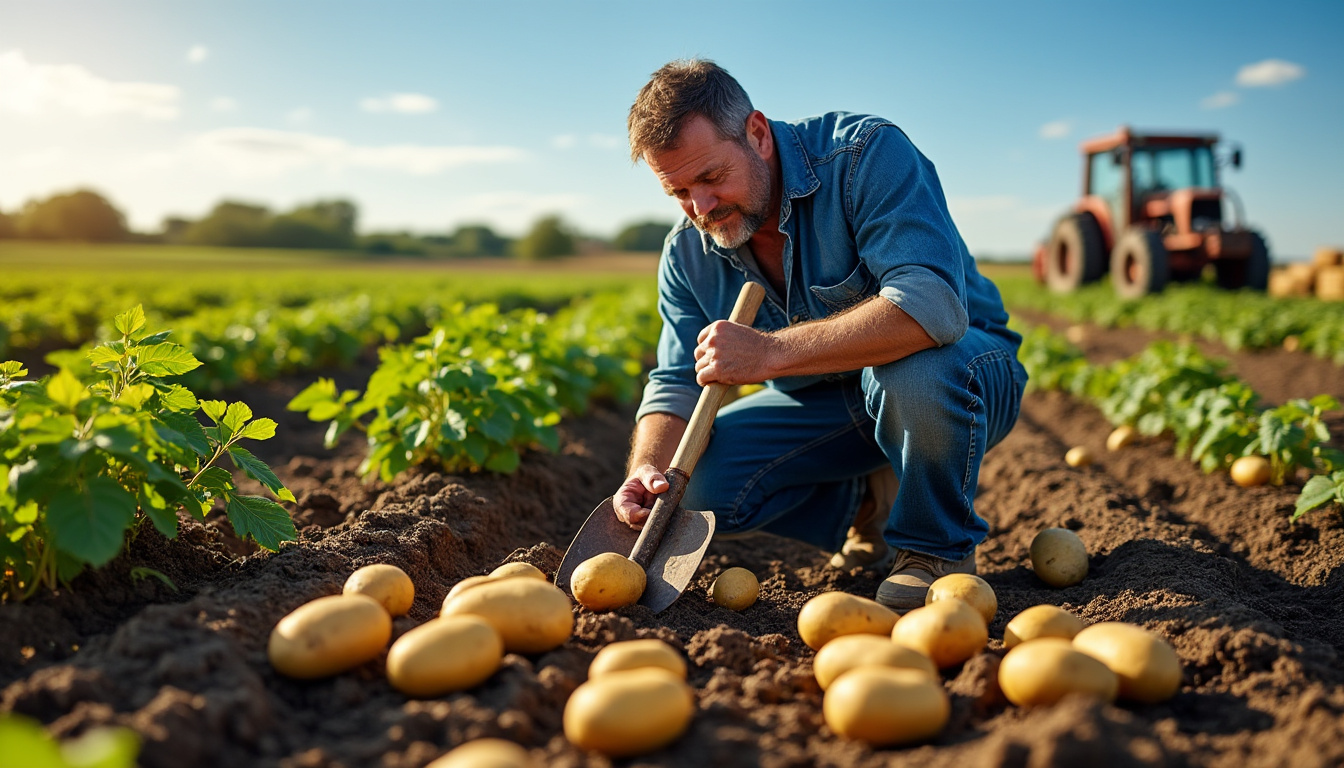Understanding the optimal timing for harvesting Maris Piper potatoes is essential for achieving a bounteous yield. These versatile root vegetables are widely recognized for their exceptional flavor and texture, making them a favorite among cooks and growers alike. The decision of when to harvest directly influences the quality of the crop, its storage potential, and the overall success of vegetable farming efforts. This guide will delve into the key aspects surrounding the readiness of Maris Piper potatoes for harvest, ensuring that British agriculture thrives through proper crop management techniques.
- Factors Influencing Harvest Time
- Optimal Signs for Harvesting
- Harvesting Techniques
- Storage Best Practices
Factors Influencing Harvest Time
The readiness of Maris Piper potatoes for harvest is influenced by a combination of environmental and developmental factors. Understanding these elements provides a foundation for successful agricultural practices.
| Factor | Description |
|---|---|
| Soil Temperature 🌡️ | It is crucial for soil temperatures to reach a minimum of 7°C (45°F) for optimum growth. Insufficient warmth can delay maturation. |
| Foliage Condition 🍃 | When foliage begins to yellow and die back, it serves as a primary indicator that the roots are maturing and ready for harvest. |
| Days to Maturity ⏳ | Maris Piper potatoes typically require 120 to 140 days from planting to reach harvest readiness, depending on conditions. |
Optimal Signs for Harvesting
Recognizing the right moment to harvest is pivotal to ensuring the best flavor and texture of the Maris Piper variety. Several signs indicate readiness:
- ☑️ Yellowing of leaves and stems
- ☑️ Drying out of foliage
- ☑️ Size of potatoes, as they should reach a desirable dimension
These indicators help guide vegetable farmers in determining the best time to undertake the harvest, ensuring maximum yield and quality.
Harvesting Techniques
When the time comes for harvest, employing the correct techniques is vital to prevent damage to the tubers. Incorrect handling can lead to a loss in yield or quality, significantly impacting food production.
Steps for Harvesting Maris Piper Potatoes:
- ⚙️ Cut back the plant stalks to ground level.
- 🌱 Gently lift the potatoes using a garden fork, starting from the outer edges towards the center.
- 💧 Avoid any harsh impacts to preserve the skin integrity.
- 🧼 Wash the potatoes thoroughly to remove soil before storage.
Storage Best Practices
Post-harvest practices are equally important to maintain the quality of Maris Piper potatoes. Storing them correctly ensures a prolonged shelf life, enhancing their usability throughout the year.
Effective Storage Guidelines:
- 🗑️ Store in a cool, dark, and well-ventilated area to prevent sprouting.
- 🌬️ Humidity control is essential; avoid damp locations to prevent rot.
- 📦 Place potatoes away from onions and apples to mitigate premature sprouting due to ethylene gas.
When to prune rosemary for optimal growth?
Frequently Asked Questions
When is the best time to harvest Maris Piper potatoes?
The optimal time to harvest is typically 10 to 12 weeks after planting, when the foliage begins to yellow and die back.
Can I store harvested Maris Piper potatoes for an extended period?
Yes, if stored in suitable conditions, Maris Piper potatoes can last several months, especially if cured properly.
What are the signs that my potatoes are developing properly?
Healthy plants with vibrant green leaves and steady growth indicate good health and potential yield.
How do I tell if my potatoes have developed to a decent size?
Inspect the size and feel of the potatoes; optimal tuber size usually corresponds with the development of the foliage above ground.
Is it better to harvest in the morning or evening?
Generally, harvesting in the cooler evenings can help reduce stress on the tubers and minimize the risk of skin damage.
















